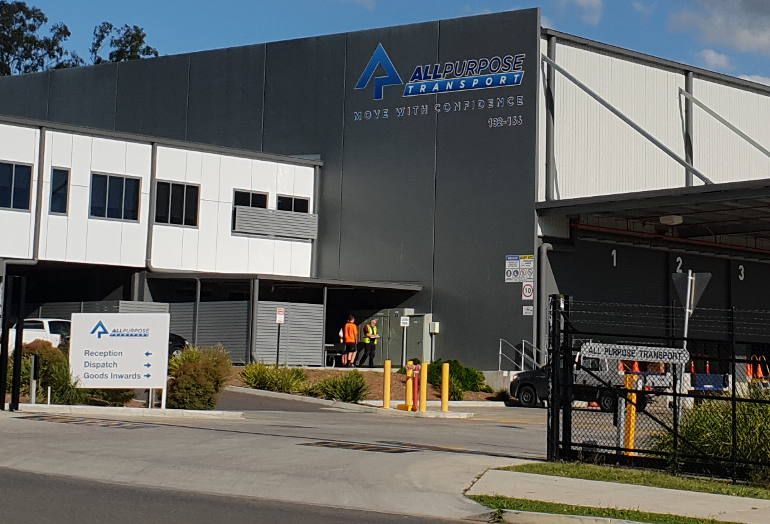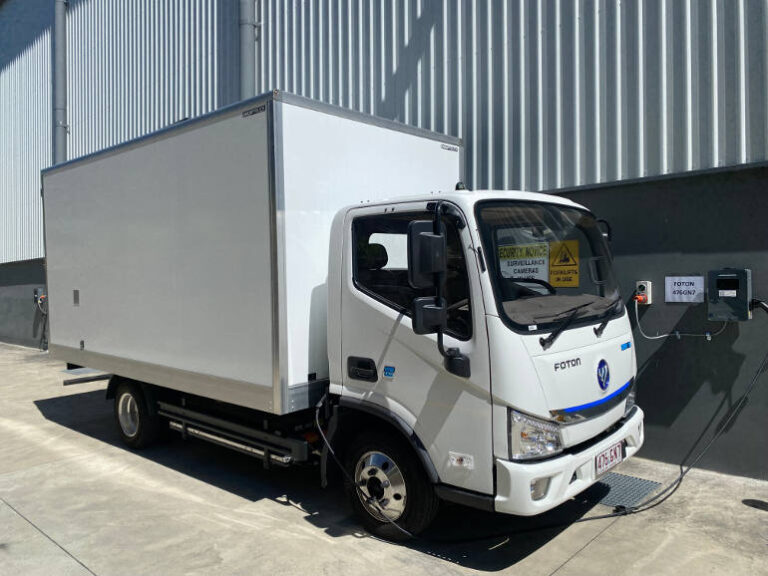One of the early adopters of zero emission deliveries has been Brisbane based All Purpose Transport through their partnership with Ikea and a broader strategy to move all of their contract drivers into lower emission and electric vehicles.
With so many electric and hydrogen trucks on display at the recent Brisbane Truck Show, I caught up with Paul Kahlert, Chief Executive Officer at All Purpose Transport, to learn more about the changes they are planning for the last mile delivery fleet.
I started by asking Kahlert to share the history of All Purpose Transport and to explain the types of products they are delivering everyday.
All Purpose Transport started back in 1975 and has been going for 48 years. We’ve got around about 300 trucks on the road; everything from couriers to semis. And we’ve got about 110 staff and working our fleet operations or warehousing operations. So we perform around about 3,000 deliveries a day across the fleet. Everything from an Ikea delivery to King Living furniture; all the way through to consumables such as milk and cheeses and all as well so quite an extensive range of products.
So you deliver refrigerated products as well?
We have a refrigerated fleet as well. But primarily we’re in the last mile business, so our focus is around getting things from the warehouse to the consumer or warehouse to the ultimately to the home delivery customer.
In 1975, last mile delivery didn’t exist, how have things changed?
No, everyone bought things from a shop and they took it home. So for us now, particularly in the last two years with COVID, we saw our business double. We went from 1,500 deliveries a day to 3,000 deliveries a day, and they are primarily last mile which is going to the customer’s house.
What do you predict for the future? We’re past the COVID period now, do you still expect growth?
Absolutely. We look at Queensland and we see the opportunity with the Olympics coming along. I don’t see the task getting smaller, I think people are used to doing home deliveries now. So I think what they want is get more things home delivered. I think the convenience angle is really where it’s going. So for us, you’ve only got to look at the streets now, and how many white vans go up and down the street and you’ll see that that that is definitely a growing marke for us.
You’ve moved into electric vehicles for your fleet, at what point did you decide to focus on reducing emissions?
In 2019 we put our first EV on the road which was in conjunction with IKEA because they have a goal of 100% zero emission by 2025. As part of that journey we need to get about 38 vehicles in the fleet by 2025.
We had to start at some stage so we went out and bought our first EV and put it on the road. We had some challenges around it as you do, generation one is always going to be hard.
But we’ve now got a situation where last year we put another six vehicles on and then we put another four on just about two months ago. By the end of the year, we’d like to see at least another five, and then that will get us into a position where we can go hard for 2025.
So what have been the two or three things that you’ve learned from the first vehicle in 2019 to the 10 vehicles now in the fleet?
Probably, the driver education. We initially had our drivers not understanding what an EV was and they they read the press about range anxiety and all that. The reality was once you got them into the vehicles, they found out that those things were a bit of a myth.
And we then also found that by putting three or four different brands of vehicles in the fleet, rather than one specific brand, it was hard to be critical of all four brands.
So what we found was the drivers got rid of a lot of their anxiety about the EVs. Our model is an owner/driver model so ultimately we want our drivers to go and buy these vehicles. So for us, we had to make sure that it worked.
The other learnings we got were about depot infrastructure. We set it up for charging because what we found was the external infrastructure isn’t set up for trucks. So when you go to charge a vehicle in the shopping centre, there’s obviously height clearances, or there’s width clearances. So when you turn up to charge your truck, and someone’s double parked, or they’re taking the spot. That’s a big challenge. So we’re trying to extend the range on the vehicles; and we’re pushing ourselves a bit at the moment to achieve this.
So how do you charge the electric trucks and vans in the fleet?
So currently, we’re bringing all 10 back to base every night. And that’s another learning because we just about wiped out our energy infrastructure because you plug them all in at once. So we’ve now got software that actually manages the charging process.
And what we found is there was a disconnect between the vehicle and charging people. So the people selling the vehicles were happy to sell the vehicles and the people selling the charger were happy to sell the chargers, but there wasn’t a complete solution. And that was when we had a few learning about getting the right equipment.
Do you have a Fleet Manager, or a dedicated role to manage the implementation of electric vehicles?
No, so we’ve really become fleet managers overnight. But it’s also been lead from the top. In our leadership team, our Finance Manager has actually taken his project on board and he’s learned all about charging, the do’s and don’ts, and he’s done all of that.
Because we own the building as well, obviously the infrastructure setting it all up, getting it right first time is important otherwise it costs a fortune. So just I think to run four chargers from the switchboard cost us over $30,000. So when you look at putting another 10 or 20 of those, you can really start spending some money.
Are you buying green energy? Or, do you have solar panels?
We looked this when we did our first vehicles zero emissions. We put a 100kva system on our roof. We then bought green energy to supplement that. And then we went and got the electric vehicle. So what we did was three stage approach.
Later this year we’ll put another 100kva on the roof, which will make our operations run energy energy efficient. The ideal thing is we actually run at zero during the day for our buildin. We’ve got an 18,000 square metre warehouse, we can run that whole operation to zero power, which means at night time we’re offsetting the power we used to charge the trucks until such time as we get batteries in the warehouse so that we can go from there.







